WHEN my first son was three, I could count on the fingers of one hand what he would eat for dinner either at home or at creche.
Accepted foods included pasta, rice, bread and, randomly, meatballs in onion gravy from Marks and Spencer! And spaghetti Bolognese, but only at creche and never at home.
In particular, he rejected all forms of meat and vegetables, and to top it off, he was allergic to milk, eggs and peanuts!
Around this time, I became interested in fussy eating research!
Coincidence, not!
Bonus: As a bonus for joining my weekly newsletter, get this FREE Family Meal Planning Guide on considerately planning dinners for your toddler (and the rest of the family).
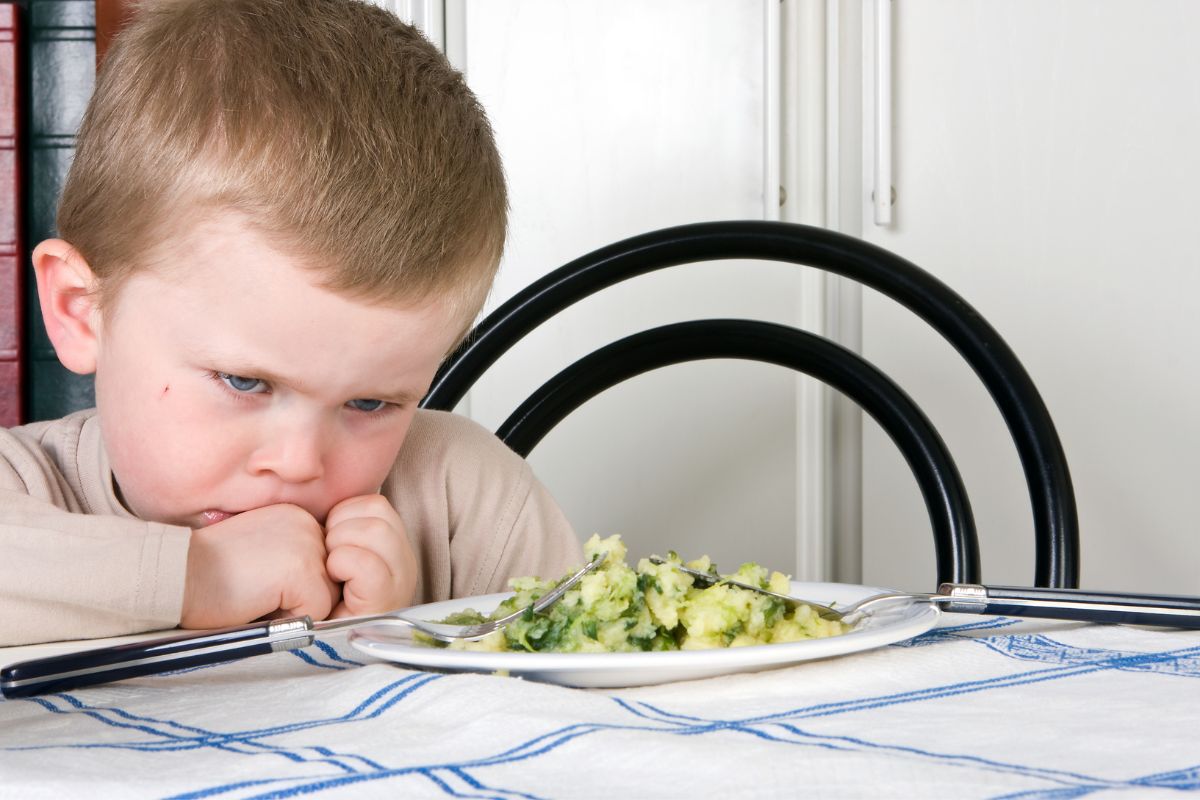
If your 3 year old won’t eat dinners, you’re NOT alone
Why is it normal for a 3-year-old to not eat dinner?
I can think of 4 reasons why dinner time is so hard with toddlers.
No. 1: Dinner comes at the end of the day for toddlers.
Dinner often comes after a long day, and your toddler is tired. We all know that fatigue and appetite are inversely linked. You’ve probably noticed that when your toddler is tired, they eat less.
When your 3-year-old is exhausted, they want foods that are easy to eat.
And your toddler isn’t the only one who’s tired. You’re tired too!
As a mum of four, I understand what it feels like to turn around and make dinner after a hard day of work, minding kids and the dreaded housework. And there’s nothing worse than listening to whinging and moaning when you finally get this meal on the table. It doesn’t make for a great mealtime experience for anyone!
No. 2: Your 3-year-old might be already full by the time it comes to dinner.
Remember that your toddler may not be hungry for dinner because they probably ate at least four other meals that day. Or more if they’ve been at the creche for a full day of meals.
Many toddlers have met their energy and nutrition needs before they ever sit down to dinner—another reason toddlers eat better at breakfast than at dinner time.
No.3: The foods served at dinner time are challenging for toddlers.
The foods served at dinner can be challenging for three-year-olds. I’m talking meat and vegetables here. We know that children often gravitate forwards carbohydrate foods. So breakfast is their perfect meal as it’s often purely carbohydrate based. Also, if your toddler is picky with food, there’s a good chance they aren’t as keen on mixed meals like curries, bolognese, and stews. When foods are mixed, deciding whether they’re ‘safe’ to eat is more challenging for some children.
As I mentioned at the start of the blog, my eldest son went from eating mixed meals as a very young baby to avoiding them for years.
Over the last sixteen years, we’ve made gradual but slow progress back to some mixed meals, but many are still far from his favourites.
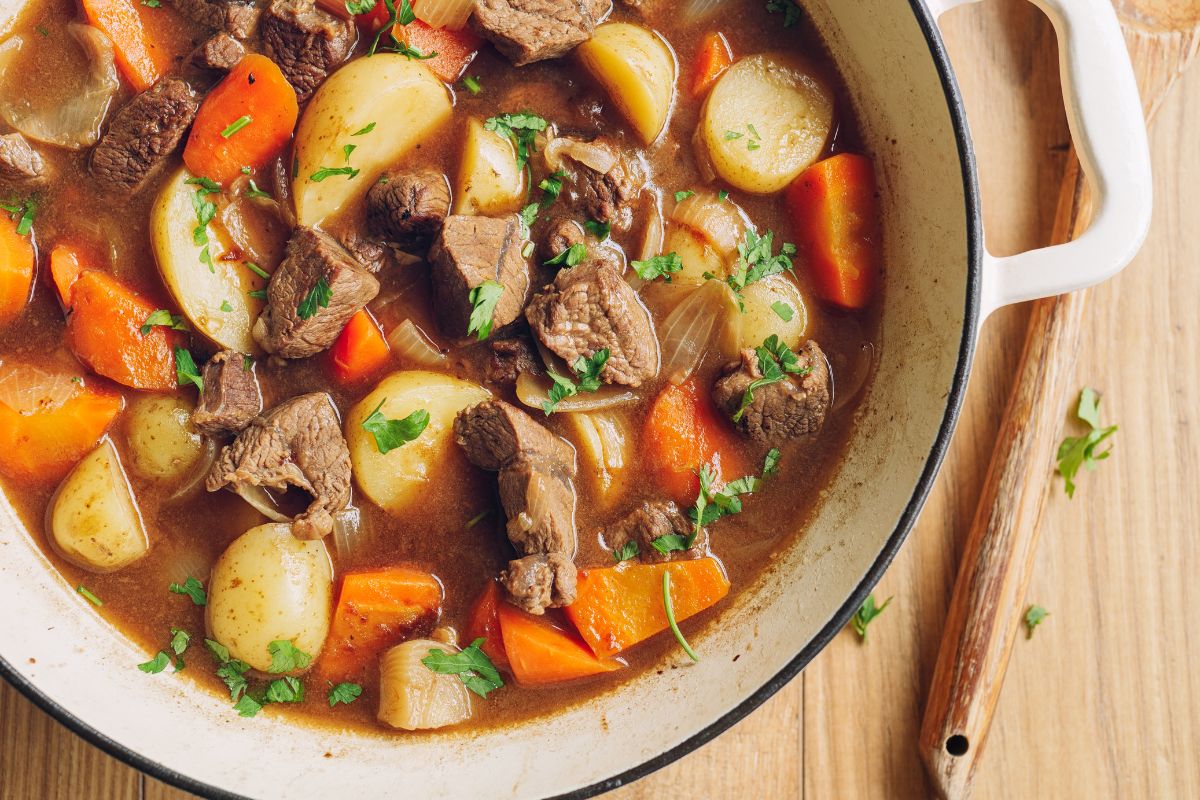
We often serve ‘easy’ foods at snack times and save the more ‘challenging’ foods for dinner time
No. 4: Parents put too much pressure on dinner for children
As parents, we often put dinner on a pedestal. When I work with parents one-to-one, they are most worried about their child not eating a good dinner. Even if their child eats well at other meals and snacks.
And they often admit to using pressurising tactics to ‘get dinner in’. But I constantly challenge parents to say why they worry about dinner. And the answer that most parents usually give is that they believe dinner is the most nutritious meal of the day.
But it’s not.
Why would foods served at dinner-time be more nutritious than similar foods served at other meals?
You can serve cooked carrots at dinner-time, but you can as easily serve some raw carrot sticks at snack time. You might serve roast chicken at dinner-time, but you can easily serve a chicken sandwich for lunch. And although you might serve a hot carbohydrate food like potatoes at dinner-time, nutritionally, this is the same as the toast served at breakfast!
As you can see, it doesn’t matter what time of the day your child eats these foods.
Serving various nutritious foods throughout the day is essential, as is having a proper feeding schedule and routine. Frequent, predictable meals and snacks take the pressure off any one meal.
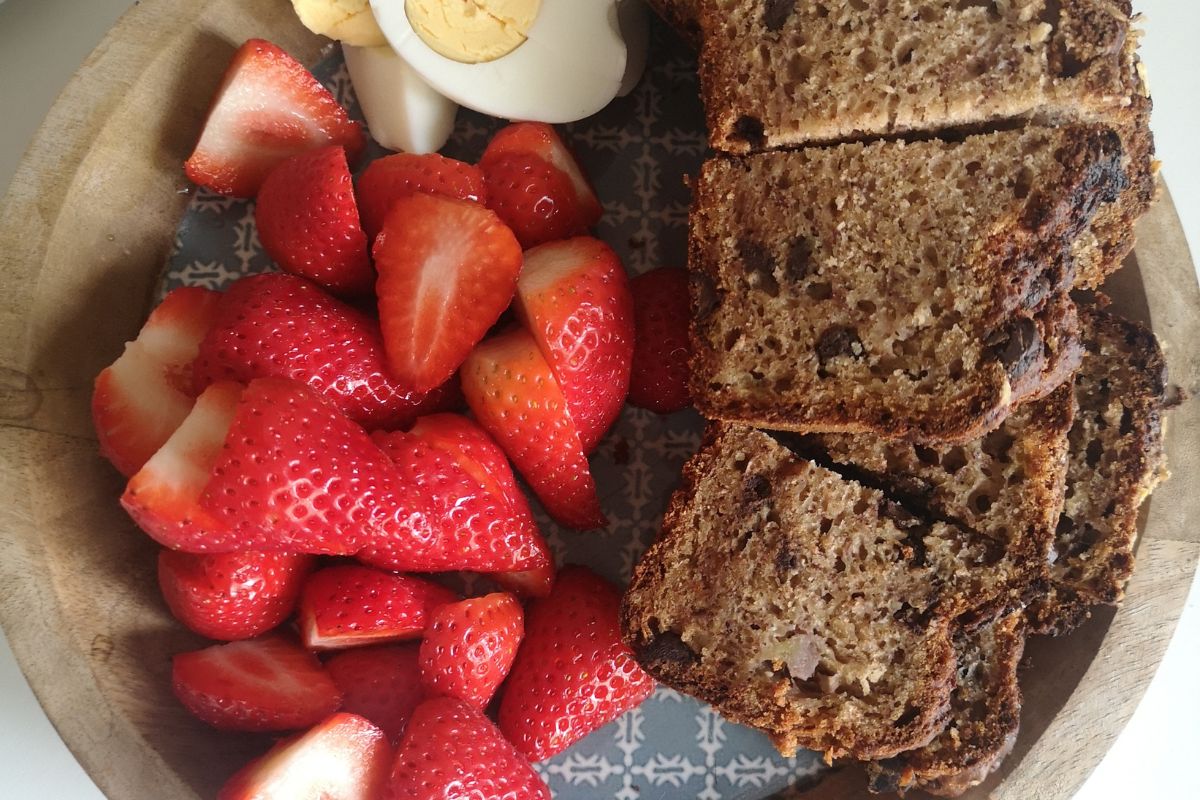
Serving nutritious foods at snack times helps to take pressure off dinner.
Feeding your Toddler Online Course
6 Tips to Surviving with a 3-year-old Who Won’t Eat Dinners
1. Keep your head
Dinner is only one meal out of five or six during the day. If your 3-year-old refuses to eat dinner, they won’t starve from missing one meal. They can make up for it the next day.
2. Take the pressure off dinner.
Remember that dinner isn’t the most important meal of the day! All meals are equally important. And that pressure at mealtimes is counterproductive.
Here’s a quick checklist for what NOT to do at dinner time with toddlers:
- No forcing-this includes no ‘here comes the aeroplane games. At three years old, children can’t feed themselves independently, and if they want to eat the food at dinner, they’ll eat it.
- No bribing-this includes saying, ‘Eat your beans, and you can have dessert’. This reinforces negative messages about foods by classifying them as good and evil, nice and yucky.
- No persuading-this might sound like this! ‘Please, I’d be so happy if you ate just one more mouthful’ or in typical Irish Mammy style, ‘you’d better eat up; some children are starving.’
- No rewarding-I occasionally suggest to parents to reward behaviour at dinner time, such as sitting at the table. Eating is not a behaviour. The desire to eat should come from within the child.
- No cringe-worthy hard-selling the food. It’s great to eat with your kids at dinner and enjoy your food. As we know, kids learn by modelling. However, be cautious with over-selling. Salivating over the broccoli or talking about how the meat will give your child’s muscles is a form of pressure that doesn’t work. You don’t do that with chocolate, after all. And kids aren’t stupid!
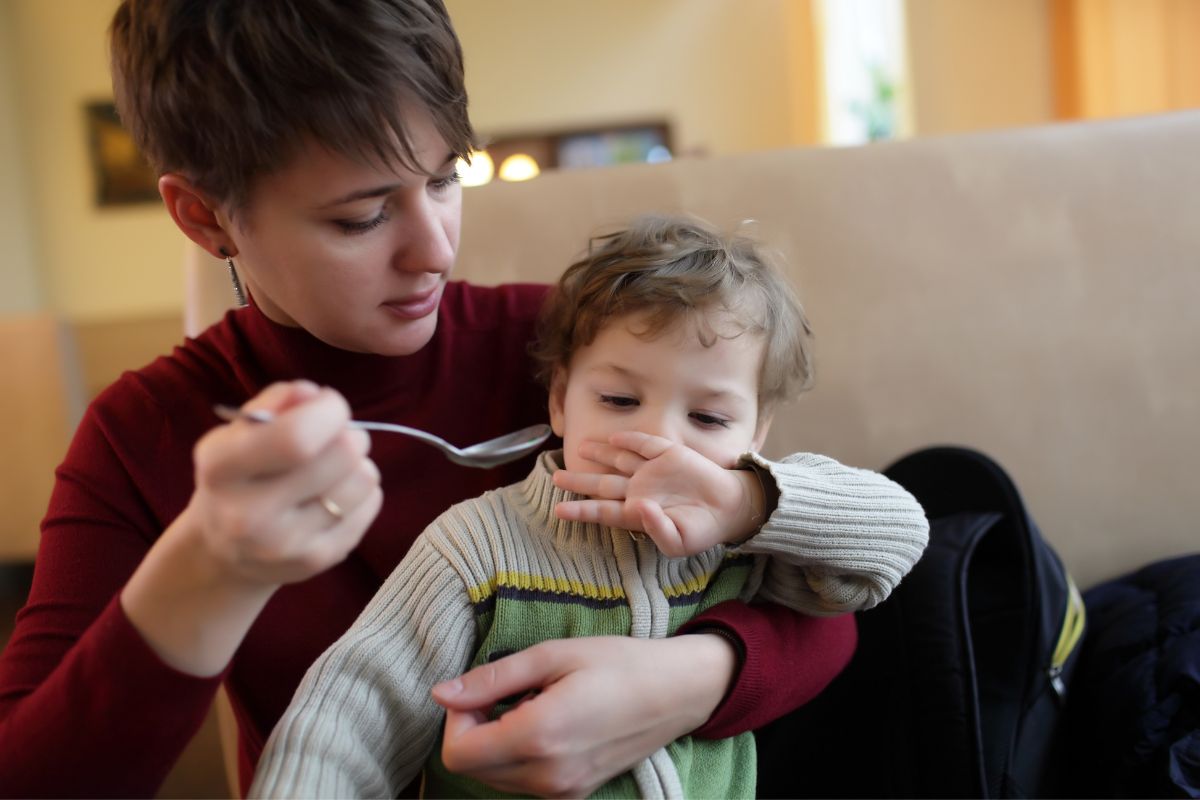
Forcing, bribing, cajoling, rewarding and praising at dinner time doesn’t help your toddler learn to like dinner foods.
3. Eat together (if you can)
Ensure at least one food on the table that your three-year-old usually likes and eats.
This strategy is crucial to stress-free family meals. When your child comes to the table for dinner, they must see food they like. This food doesn’t have to be their favourite, but there must be at least one food they can eat when hungry. Doing this is considerate and is different from catering to your child.
Signs that you’re catering for your 3-year-old.
You’re
- Serving only food your child likes
- Afraid to introduce new foods
- Serving separate dinners
- Offering replacement meals
Signs that you’re being considerate with meal planning.
You’re
- Serving foods that you like and new foods
- Serving the same meal for the whole family
- Including at least one food each person will eat
Below is my simple meal-planning process for family dinners.
- Write out the days of the week
- Look at the weekly commitments for extracurricular activities, work, etc.
- Fill in some days with dinners I enjoy (the cook deserves to eat well too!)
- Fill in some days with dinners I know each child enjoys
- Add side dishes or desserts where necessary to ensure at least one food in each dinner that everyone likes.
FREEBIE: Get your printable sample and blank considerate meal planning template.
4. Try serving dinners to your 3-year-old family style.
If you follow me on social media, you’ll know that I’m a huge fan of serving meals family style. And you’ll see I serve almost all our meals, including dinner, this way. And they have been since my youngest was a baby.
Family-style meals are a great way to serve dinner to your three-year-old. The HSE preschool guidelines recommend that creches use this approach in their setting. It’s ultimately a very low-pressure way to offer new foods, and a bonus, in my view, is that it reduces food wastage.
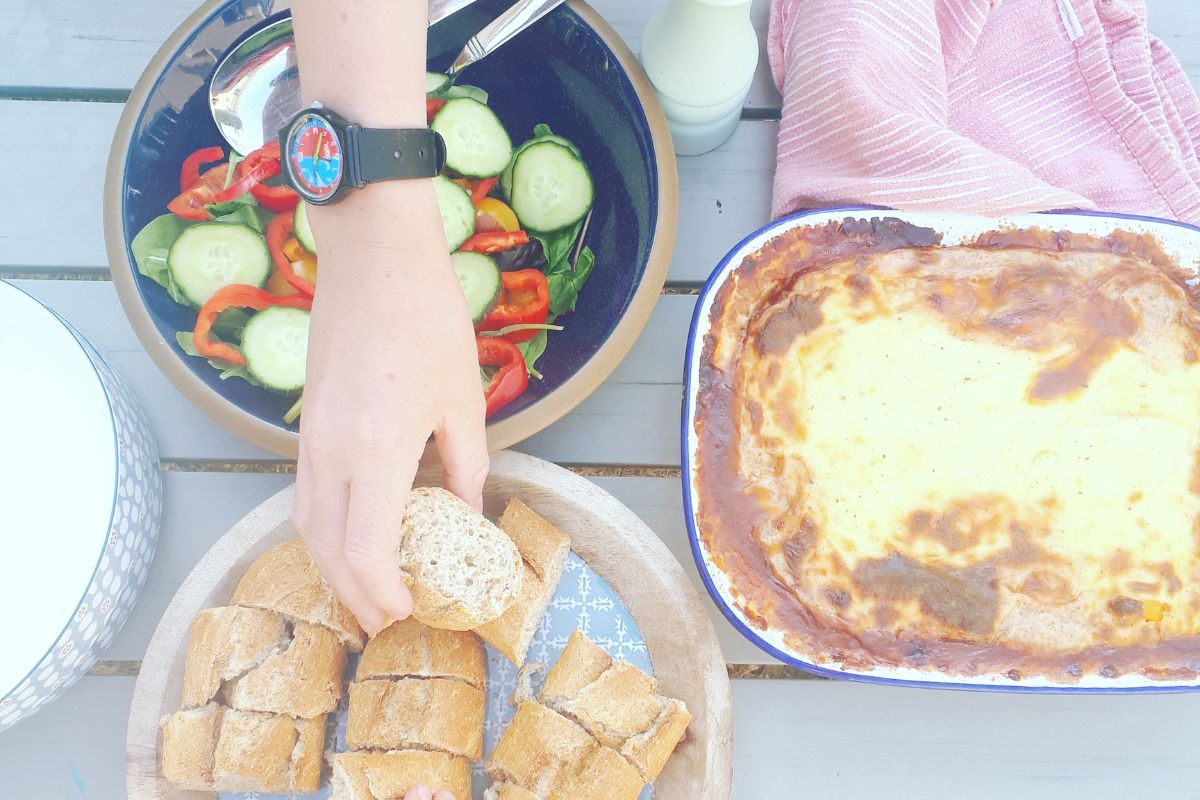
Serving meals ‘family style’ is a low-pressure way to serve dinner. And it helps to reduce food waste too!
5. Consider serving dessert alongside dinner.
Are you struggling to get your three-year-old to come to the table at dinner time? Well, what could be more enticing than serving dessert at this meal? Dessert can be anything from ice cream, fruit, yoghurt or cake.
You can read more about serving desserts at dinnertime here.
6. Get some support
When dinner times have been stressful, it can be challenging to get back on track without some support. You can book a FREE discovery call with me here or ask your GP to refer you to the HSE dietitian, a free service.
What time should a three-year-old eat dinner?
I don’t think there is an ideal time! Generally, about 2-3 hours after their afternoon snack is about right. But it depends on your family and work situation.
If your child is in creche all day and eats their meals there, don’t expect them to eat a lot at the family dinner. Just enjoy this time for connecting after a long day apart. However, it might be too much of a rush for you to get dinner ready before bedtime. In that case, prioritise weekend family dinners when you’re not rushing.

If you still have questions that’s OK!
Let’s answer some frequently asked questions about managing dinner with a three-year-old:
What to do when your three-year-old won’t eat dinner?
If you’ve included a preferred food or foods at the meal,
Maybe they’re not hungry. Check in with them to see whether their tummy is full. If not, remind them when the next meal is due. For many three-year-olds, this might be breakfast the next day.
You haven’t included a preferred food (that’s OK, we all make mistakes).
Add a preferred food to the table for everyone to eat. Make this simple, like bread or fruit—something you can grab and add to the table rather than something that will take ages to prepare.
How do I get my three-year-old to sit for dinner?
There are a few checks you need to do first!
- Do you have a predictable schedule for meals and snacks
- Does your toddler have a comfortable seat? Children need their feet to eat, so ensure you support their feet on a footrest. Ideally, they need a 90-degree angle at their hips, knees and ankles.
- Are you avoiding pressure at mealtimes?
- Have you included at least one preferred food on the table
Once the basics are in place. Here’s another strategy that you can use. It’s called a pre-meal routine. A pre-meal routine can help your toddler prepare for dinner (or any other meal or snack).
Step 1: A 5-minute countdown to dinner. Let your toddler know that dinner is on the way, and they can finish their current activity.
Step 2: A transition activity – as the name suggests, this helps children to transition between play/nap/TV and dinner time. Some children benefit from energetic jumping or dancing; for others, a gentle activity like washing their hands works well.
Step 3: Everyone sits at the table
Should a three-year-old sit at dinner table?
Ideally, family meals should be at the table. But only some families have a table! In this case, sitting on the floor, as some cultures do, or sitting around an island is fine too. The important thing is that your toddler is in the best sitting position for eating and learning the social aspects of mealtimes by eating with others. And that the meal is distraction-free (Note: this isn’t always possible for some children)
Why does my toddler want to walk around while eating?
Toddlers can be fidgety and easily distracted! Ensure you’re not letting the meal go on for too long! Try to keep it to 30 minutes maximum, but most meals will be much shorter than this. If your toddler tries to get down from the table, check in to see if they’re full. If they’re not, explain that eating happens at the table, and if they want to fill up, they should eat until their tummy is full. If they leave the table, this shows you they’ve had enough, and you clear away their food.
How long should a three-year-old sit at a table?
Different children eat at different speeds. So, trust that your child will eat enough and then if they want to leave the table, let them. Even when meals are enjoyable and contain food that they enjoy, hungry children can get enough to eat in 10 or 15 minutes—or even less. I usually recommend not letting meals go longer than 30 minutes.
Toddler won’t eat dinner but wants snacks.
Again this goes back to the benefit of having a predictable meal and snack structure. Some families like to create a visual schedule for the day to show their three-year-old when the next meal or snack is due.
It’s also important not to create a distinction between meal and snack foods. Try to serve a variety of foods throughout the day. If ALL snacks are easy foods like packaged snacks, fruit and yoghurt but dinners are solely challenging foods like meat, vegetables and mixed meals, toddlers quickly learn to love snacks more and lose interest in dinner.
Toddler won’t eat dinner but wants dessert.
That’s OK! Dessert shouldn’t be contingent on eating other foods. Offering dessert only after eating other foods puts it on a pedestal and implies it’s a reward for eating less pleasant foods like meat and vegetables. If you’re serving dessert, be relaxed about how your child eats it. And remember, it’s up to you what and how often you choose to put dessert on the dinner menu.
I want you to know this.
If you’re struggling at the moment, don’t worry. It won’t be like this forever. It’s certainly not in my family. My son’s favourite meals now include homemade meatballs and fishcakes, and his favourite veg is asparagus (admittedly, he doesn’t like many others!). And he’s also started eating lettuce. He’s 16 now, so hang in there. It takes time for these strategies to work.
Feeding your Toddler Online Course
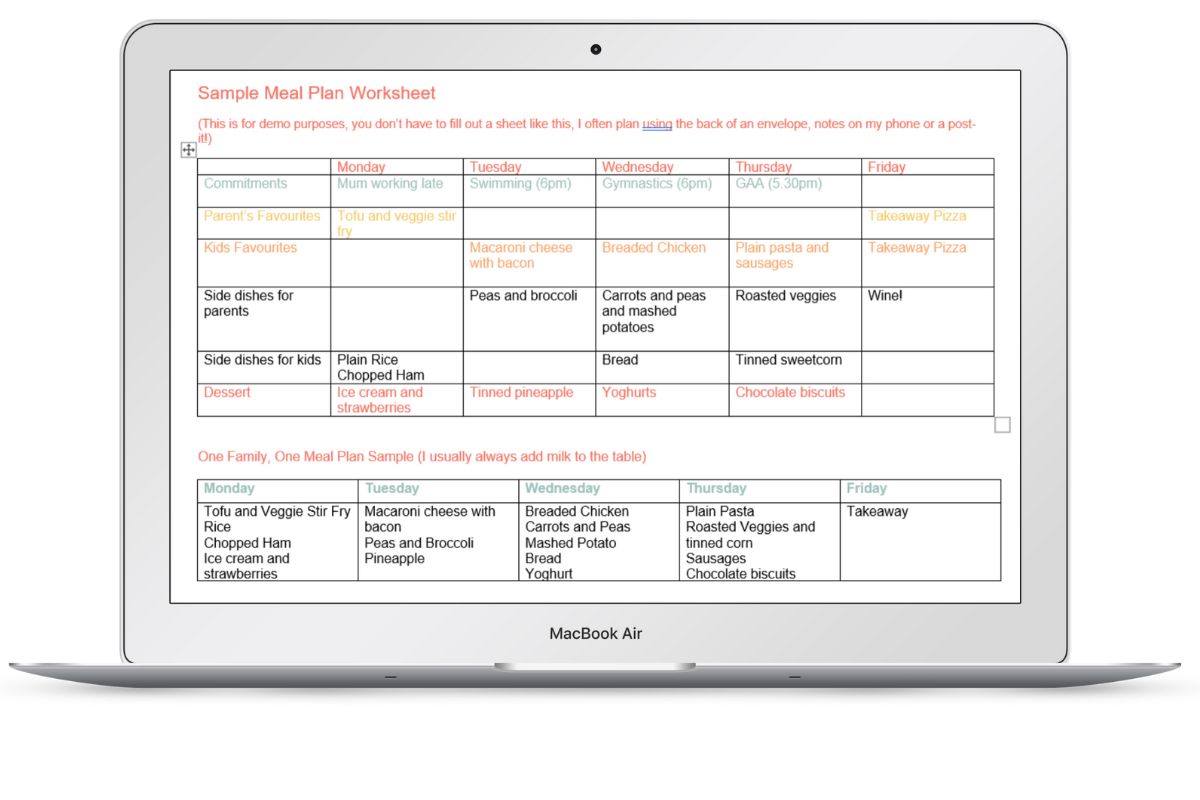
This is the method I use with my family to plan dinners EVERYONE can enjoy
Get Your Considerate Meal Planning Guide and Worksheet
When you’re tired at the end of the day, it’s the worst time to devise a dinner plan to keep everyone happy. I’ve compiled a FREE resource to help you make a considerate weekly dinner plan to keep the whole family happy.
- Get my Sample Considerate Meal Planning Guide. You’ll get the guide and worksheets, plus join my weekly newsletter! Just click here to get it and subscribe.
- Print or download it onto your phone.
- Hang your Meal Plan somewhere handy, like the fridge. Or save it in a folder on your phone.
How to Read Nutrition Labels (Without Losing Your Mind in the Aisle!)
INSIDE: Wondering how to read nutrition labels without getting overwhelmed? This guide breaks down food packaging, explains hidden sugars, fats, and ultra-processed foods, and helps you make confident choices for your family—without spending hours in the...
The Ultimate Easy Guide to Fruits for Toddlers (kid-approved!)
We would all love for our toddlers to embrace fruit as a regular part of their diet as it is so easy to prepare, tends to be in our kitchens anyway, and is an excellent source of hydration, vitamins, and fibre for our little ones. This is your questions answered about fruit for toddlers so you can feel confident implementing fruit into your toddler’s diet.
Tiny Tummies, Big Growth: A Dietitian Mum’s Guide to Protein for Toddlers
INSIDE: Protein is the nutrient of the moment. And as toddlers can be challenging to feed, it’s not surprising if you have concerns and questions about protein for toddlers. This blog explores protein, how to get enough, and easy ways to include it in your toddler’s...



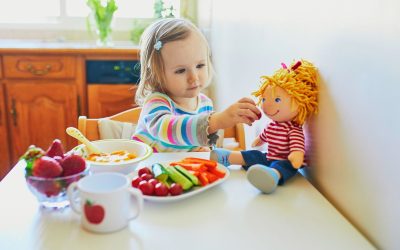


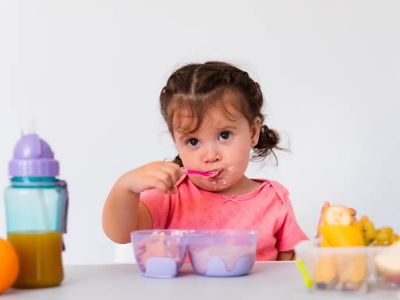


0 Comments